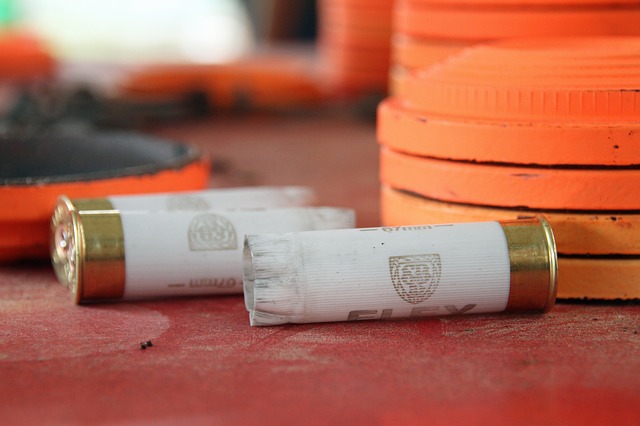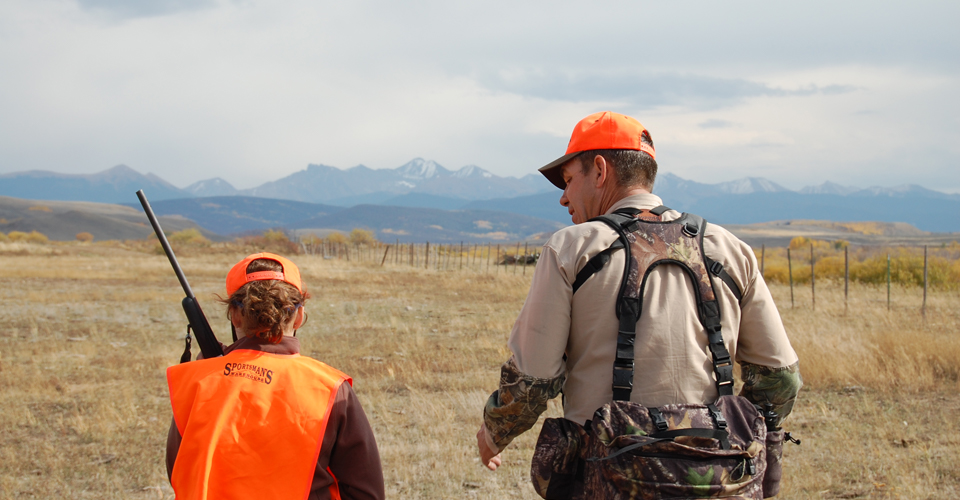
New York State law permits hunting if you are interested. Hunters will need back tags for turkey or deer hunting. The regulations are constantly updated so it's a good idea to keep checking back to ensure you are following them. New York State's hunting laws are governed by the rules passed by the Legislature, as well as the regulations put forth by the DEC.
New York State law authorizes nysdec-hunting
The NYS Legislature passed a temporary program that permits young hunters to hunt state wildlife and deer if they live in a municipality that regulates weapons use. In addition, the DEC has extended the late bow and muzzleloader season in the Southern Zone. The daily hunting hours have been extended from 30 mins before sunrise to 30 mins after sunset. The strict licensing requirements, comprehensive ECL statutes and the New York State Legislature's explicit preemption authority are all clear indicators of the intent to regulate hunting.
The DEC is currently preparing other hunting-related changes. These changes will be announced by the DEC to the public in due time. One of the changes will open up more opportunities for junior hunters to hunt in New York. Deer, turkeys, pheasants, waterfowl and wild turkey are all designated as special youth hunts by New York State for youths 12 and older. These hunts offer youth hunters the chance to hunt with experienced hunters while learning the skills that will make them successful hunters.

Hunter education courses are available
You will need to take a hunter training course if you are looking to obtain your New York hunting licence. There are many different types of hunter education courses available, and one of them is a bowhunter education course. You can enroll in either an in-person or online hunter education course. The DEC website also lists courses near you. The website is easily accessible 24 hours a days, 7 days a week.
The Hunter Education Program works with DEC-certified instructors to provide free training to the public. These courses can take up to several hours and require some homework. While you can complete some courses online, you will still need to bring a signed consent slip from a parent/legal Guardian. Hunter Education courses are obligatory for New York State hunters. These courses may also be offered in New Jersey, Connecticut, Pennsylvania and New Jersey.
Back tags are required for deer and turkey hunters
Hunting turkeys or deer in New York State requires a hunting licence, a back tag, as well as a carcass tags. A print license listing your rights, a lifetime card or a New York driving license with an adventure icon can be used to obtain the license. You can also download the HuntFishNY app, which serves as proof of hunting license. It is still required to have back tags and carcass tags. You may also need to fill out special paperwork for special hunts, such as for hunting ducks.
Holders of hunting licenses for deer and turkey must understand and comply with the hunting tag rules. It is crucial to be familiar with the specific requirements of each game tag. Each game tag is only valid for one animal. You cannot use another person's tag or allow someone to use your deer tag. To purchase a deer license, you must be at the least 12 years. You can buy the license before you hunt. The second license must be purchased at the same moment as the first.

The formal rule making process must be followed before regulations can be made.
Before rules regarding hunting activities in New York State Department of Environmental Conservation can be made effective, they need to be approved by the formal rule making process. The process includes publishing the regulation in State Register. A formal public comment period typically lasts 45-days and finally, an adoption package. The final regulation is published in State Register, and it becomes law. It might require a Regulatory Flexibility Analysis of Small Businesses (RFA) or a Rural Community Impact Analysis.
New York State Legislature and DEC are responsible for enacting hunting regulations. The New York Code of Rules and Regulations governs these regulations. The DEC does not have the exclusive authority to modify the ECL. Hunters are encouraged to contact their legislators and make their voices heard. Below are some key facts about hunting in New York.
FAQ
What types of guns can be legally used?
You can hunt with many different types and styles of weaponry.
Hunters use shotguns, rifles, handguns, as well as muzzle-loading firearms.
Rifles can fire bullets at long distances. Shotguns are often loaded with pellets. Handguns can fire bullets through the hands. Muzzle-loading firearms work in the same manner as modern-day pistols.
Crossbows can be used to shoot arrows. Bowhunters are archery weapons.
You need to be skilled in hunting with a crossbow. The first step is to master the art of shooting and aiming the weapon.
What is the most important aspect of hunting animals
How do we get there Start by learning how you can shoot accurately. Next, we need to learn how to hit the target. Finally, you must be able to make changes if you fail.
Knowing what you are doing is the most important aspect of hunting. You won't improve if you don't understand what you are doing. Even though you might feel that you have improved through better shots, it doesn't mean you will be any better. The same goes for hitting targets. You won't improve if you don't know why you are missing. This means that it is essential to understand what your goal is.
This is where knowledge really comes into play. Your ability hunt depends on how well you know the animal you want to kill. It's important to understand all you can about animals when you're outside in the wild. It's important to learn about their habits, personalities, and behaviors. So you can plan your hunts smoothly and efficiently.
You should always try to learn from others who have been successful in the past. There are many books available on this topic. In addition, there are websites like www.thehuntingzone.com that offer great tips and advice. You can also find people with years worth of experience. They can help you identify what works and what doesn't work.
Once you are confident in your knowledge, you can start to practice. Practice makes perfect. But you should not practice until you feel great. Instead, you should practice to become confident. Confidence is a way to relax and enjoy the process. Relaxation can help you focus on the task in hand. Concentration allows for you to make the most of every opportunity. Opportunities only come when you are relaxed and focused.
Now it's time put your new skills to work. Do not worry if your attempts fail. Just keep practicing and improving. Eventually, you'll find success.
What is the U.S. Department of Agriculture's (USDA) estimation of deer hunting?
The USDA estimates that about 6.5 million Americans hunt deer. Only 2.2 million of these people actually shoot deer.
This means that approximately 0.6 percent of hunters kill deer every year.
Can I bring my dog with me?
In most states, hunting dogs with humans is prohibited. Some states allow this practice, however. Check with your state's department of natural resources to find out if this is allowed in your area.
Some hunters also bring their pets along. Some people believe that having a pet around helps them relax when they are hunting. Some believe having a companion makes it less likely that they will get lost.
The problem with bringing a pet is that it can cause some problems. Dogs tend to chase animals away from the hunter. Wild animals might attack the pet.
What are the benefits to hunting?
Hunting is a tradition that many cultures have followed for centuries. It was used to obtain food, clothing and shelter. Even today, hunters still hunt for sport but also food and recreation. The meat from hunted animal is usually consumed immediately following killing. However, the skin, feathers, bones, antlers horns, teeth and hooves of the animals may be sold as trophy parts.
Hunting isn’t just about eating, it’s a way that you can live.
People who hunt have strong family ties and friendships because they spend time together. They share stories, memories and laughs around campfires or over meals.
Hunting and nature are a joy for hunters, and this helps them appreciate the rest of our planet.
When they take care of wild animals, they learn respect and responsibility.
Because they practice conservation, hunters become better citizens. They protect habitats as well as species. They understand how much land and water we need to survive.
Hunters form part of a wider community. Their families depend on them. They help each other. They support local business.
Hunters are also able to give back to the community. Many donate money to organizations that help children, elderly people, veterans, and other groups.
Hunters can also volunteer their time to help those in need. You might see them volunteering with the Red Cross or Humane Society.
Statistics
- - Percent of residents with paid hunting licenses: 0.7%- (stacker.com)
- In less than 20 years, Rhode Island saw a 40% drop in the number of hunting licenses for residents, according to The Valley Breeze. (stacker.com)
- Licenses dropped from a peak of roughly 17 million in the 1980s to 15 million in 2019, according to The Seattle Times. (stacker.com)
- Less than 1% of Hawaii's population has a hunting license. (stacker.com)
External Links
How To
How to hunt wild hogs
Wild hogs are large animals found in North America, Africa, Asia, and Europe. Wild hogs are omnivores. They eat plants and small animals like rabbits, mice and birds. They usually eat at nights. The gestation period lasts around six months, after which one piglet is born. A sow has one child every two years. Wild hogs live alone, but sometimes they are part of a group called herds.
Wild boars weigh in at around 200 pounds (90 kg). Their head length averages from 10 to 12 inches (25-30 cm), while their body length ranges from 20 to 30 inches (50-75 cm). Wild pigs are long-legged, have broad shoulders and short tails. Their skin is covered with a thick layer fat.
They are extremely sensitive to the senses of sight, hearing, smell, and taste. These senses help them detect danger and find food. They can run upto 35 miles an hour (56 km/h), and can jump up to 15 feet (4m) in a single bound. They have sharp teeth and claws. They are aggressive when defending themselves against predators.
Hunting wild animals is challenging because they are intelligent, fast and elusive. Hunting wild hogs requires careful observation. Hunters should not shoot too quickly. The animal might escape. Hunting too early can cause the animal to escape.
There are many methods of hunting wild hogs. The most common method of killing wild hogs is to shoot. This requires hunters hunting to find the animal, then waiting until it comes within range. Trapping is another option. Setting traps near water sources is another method of trapping. The traps are often equipped with a scent lure that includes peanut butter mixed with corn meal. After the trap is set, the hunter kills the trapped porc.
Snaring, another method, is also an option. To catch the pig, snaring uses a rope-covered noose. It works best when the pigs are caught during their mating season.
Other methods include spearing, netting, and poisoning. For a pig to stop breathing, netting or spearing involves putting a net or spear around its neck. Poisoning can be done by injecting poison into the body of the pig.
Hunting wild hogs is a challenging sport. Hunters should be prepared for winter. In some areas, hunters wear snowshoes to keep warm. Some hunters carry dogs to help them track the animals.